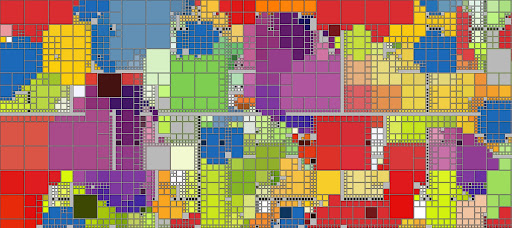“Humans have evolved over the millennia to care deeply about the way people talk—and to use this marker as a quick-and-dirty signal of who is us and who is them.”
--Katherine D. Kinzler, How You Say It (2020)
Human differences are really a critical part of our humanity, a fact gaining recognition and traction at work, school, and organized behavior in general. This is the goal of DEI – Diversity, Equality, and Inclusion--as this principle seeks to inform human relations across the board.
The DEI movement is picking up speed and power not only in
multinational business, where it first took root because businesses like IBM
had global workforces, but in professional organizations, schools, nonprofits, companies
and working groups of all sizes in the US and its multinationals.
While gender and race, the startpoints of DEI, are well
acknowledged, other points of difference like mental health states and (coming
soon) Covid status as a long-term health issue are less well-known as human
factors. As points of difference, these
factors are seen to unfairly tip the balance of power between people, their
interactions, and opportunities. But
here is yet another aspect to be explored, and it has even more social clout:
speech.
Speech differences between groups are far older than our
concept of race difference. While we can’t
determine how far back spoken language extends in the human record, speech is
one of the first dividers of groups.
Children are language discriminators who instinctively gravitate to speakers
who sound like their parents. Language
categories are intrinsic to our ideas about “others,” especially since any
language other than our own prevents communication to any degree. Speech is perhaps the most basic marker of
who we are and how we relate to others through our individual as well as group
voice. It is the ultimate social skill –
yet its many variations create mental categories we can’t help noticing and
reacting to.
Speech bias is so ingrained in our daily interactions that
we don’t recognition it’s there – or that it is in face a prejudice that rules
our opinions of others. But this is more
than personal preference for one “brand” of speech over another. It drives our justice system, our social
circles, education attainment, housing (where people can buy or rent), medical
treatment, job application, careers, and the attainment of life goals. Our speech quality and perception by others
shapes the very goals we feel are possible to achieve.
In the US, there is race—and there is language. Not just languages other than American
English as the US unofficial tongue (along with the second designate, Spanish)
but variations like accent or dialect.
This scope would include Black or African-American English (AAE)
dialect, as well as immigrated English speech with an accent (as in Chicano
English). Supreme Court Justice Clarence
Thomas grew up speaking Gullah, the English creole spoken on coastal Georgia. He clearly was able to do as many other
professionals have done – “code-switch” between his home style for which he was
ridiculed and another, mainstream standard of the bar and bench.
Black children’s ability to code-switch between African
American English (Ebonics) and standard English determines their school test
scores for educational upward mobility.
It also sets the trajectory for “the places these kids might want to go,
to learn, work, and live…you’re handicapping them by not teaching them the two codes,”
says Julie Wahington, language specialist at George State. Besides test scores, creating a level playing
field is based on language even more than race, and speech discrimination is
ongoing (Atlantic, April 2018, p. 20).
Katherine Kinzler’s recent book How You Say It (Why
You Talk the Way You Do and What It Says About You) points to speech as more
important than race in the social hierarchy.
How people speak, no matter how they look, determines how much they are
trusted, where they can live and work, where they go to school, and how they
are treated by the justice system. Their
future prospects, and those of their children, depend on these factors, and how
they are driven by accent, word usage, dialect, and related variant patterns
measured again mainstream-educated (many would say White) standards.
This is all very unconscious. We are constantly exercising our preferences
for some kinds of speech over others, starting with preferring our mother
tongue over all others. We assign
greater status to whoever we think is a better speaker and to the groups that
speak as they do. Think of how socially advantaged a posh accent (English or
MidAtlantic) can be, while also alienating as a class signifier-- versus a
“street speech” repertoire. National origin
prejudice is protected by EEOC rules, but not the persistent accent associated
with immigrant status. Linguistic bias is everyone’s unconscious prejudice, and
we rarely consider why we like some people more than others simply based on the
way they handle language. A whole field has opened up, signaled by Kinzler’s
work, to answer this question. Nonstandard
and socially marginalized speech, as part of “linguistic discrimination should
be part of our national and judicial consciousness, and we should make an
effort to curb it in our legal system and our minds (p. 150).”
So it should be surprising that speech is not included on
the DEI spectrum. This gap ignores a
wide agenda of social effects—those that point to status on the hierarchy of
social opportunity and potential. Speech
bias indicates on ongoing major source of discrimination based on sound, not
visual, cues. Stigmatized speech links
to discrimination by gender and race, national origin, mental capacity, age,
and class – in ways that may shed light on those more established categories as
well.









